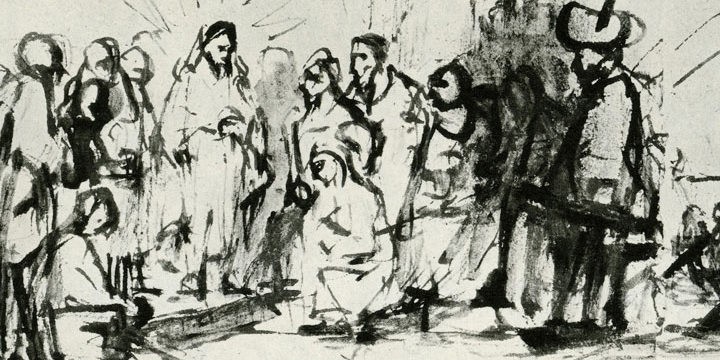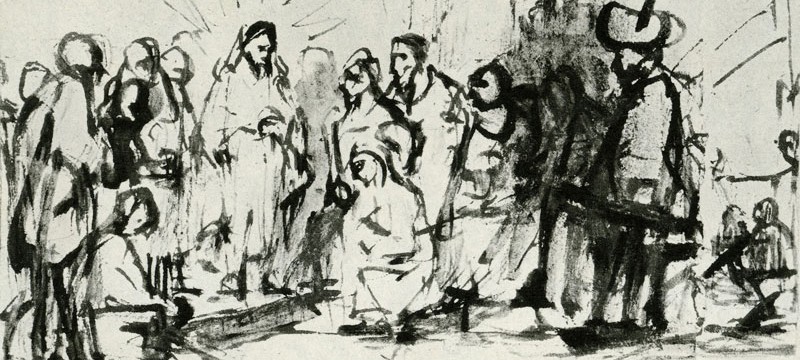I grew up as a missionary kid in a country where political and racial differences led to bloodshed and genocide.
This was not actively directed toward American missionaries. They were bystanders. Often they had no opportunity to intervene because the hostile actions occurred away from plain view. Friends of ours were killed in nighttime massacres. Others slipped over the borders to become refugees. I felt anxiety and helplessness from the American adults around me.

Becky Ankeny
I also became interested in the Holocaust, repeatedly reading A Prisoner and Yet by Corrie ten Boom, a grittier version of The Hiding Place. It was helpful to see her faithfulness to God despite being in a concentration camp, but perhaps less encouraging to know she was there for standing in the way of racially motivated evil.
So in the present troubling time, how can I learn a better response when I personally witness the harassment and bullying of marginalized persons — a better response than helpless anxiety and the resulting shame?
Ervin Staub survived the Nazi invasion of Hungary and subsequent rounding up of Jews because of two acts of kindness from people he came to call active bystanders. He made this phenomenon his area of academic expertise as a professor at the University of Massachusetts at Amherst. His curriculum for schoolchildren teaches them how to be active bystanders in situations of public hatred and bullying.
This curriculum has as its goals that all persons leave the situation physically unharmed, that the target of hatred feels empowered and supported, and that the harm doer be invited into the possibility of change. The training I took on this altered my understanding of how to help in important ways, particularly the emphasis on de-escalation, distraction and empowerment of the target.
The story in John 8 where powerful men bring an adulterous woman to Jesus can be seen as illustrating some of the principles of being an active bystander. One difference is that they were using this to trap Jesus into being a target, but what Jesus did is still instructive.
“Moving beside the target signals to the target that they are not alone.”
First, Jesus stood by the woman rather than moving away; they were together inside the circle of harm doers. Moving beside the target signals to the target that they are not alone.
Then Jesus distracted the harm doers; he bent over and drew on the ground with his finger. Doing something unexpected — spilling one’s coffee, bursting into song, dropping a purse, faking a heart attack — can derail the intimidating focus of harm doers without escalating the hostility or becoming the target.
However, since Jesus also was the main target of their hostility, they continued asking him to judge the woman. Instead, he said, to no one in particular but to everyone as well, “If any of you have never sinned, you go ahead and throw stones at her.” Then he again began writing on the ground.
His challenge is similar to the action of looking for allies; we might say: “I’m not comfortable with what’s happening here. Are any of the rest of you also uncomfortable?” People have speculated that Jesus was writing names into the dirt of those in the persecuting crowd, and if so (although I don’t insist on this interpretation), he was documenting the event in a way that disrupted the mob.
Then he asked the woman: “Where is everyone? Is no one left here to accuse you?” This illustrates the practice of checking in with the target after the threat has dissipated to see what kind of support they continue to need. This also illustrates that an active bystander does not press help on an unwilling person. (Jesus’ last words to her — “sin no more” — are appropriate for only him to say.)
“Being an active bystander requires moral courage.”
Being an active bystander requires moral courage, the courage to take appropriate action in situations where harm is being done to a targeted person. It doesn’t seem like it will change the world immediately, to be honest, but it does seem like obedience to Jesus, who said, “Love your enemies.”
It also respects God, who has reserved judgment and vengeance to God’s self, and it shows love for both the neighbor who is being beset by hatred and intimidation and the neighbor whose fear has given way to possession by hatred and bullying behavior.
It is both wise as a serpent and as innocent as a dove, and it helps those of us prone to anxious helplessness think about our responsibility by giving us doable actions strategies to use in the midst of conflict.
Becky Ankeny lives in Newberg, Ore., and is a former professor at George Fox University. She is a Quaker and previously served as general superintendent of the Northwest Yearly Meeting of Friends. Her parents were Friends missionaries in Burundi, Africa, for three decades, and she spent much of her first 15 years there. She graduated from George Fox College in 1977 and received an MBA and Ph.D. in English from the University of Oregon. Her Ph.D. work was on the fiction of George MacDonald, a Victorian preacher and writer who influenced C.S. Lewis. She taught at Westmont College from 1986 to 1988 before returning to her alma mater, George Fox, to work as a professor of English and as an administrator from 1988 to 2011.


